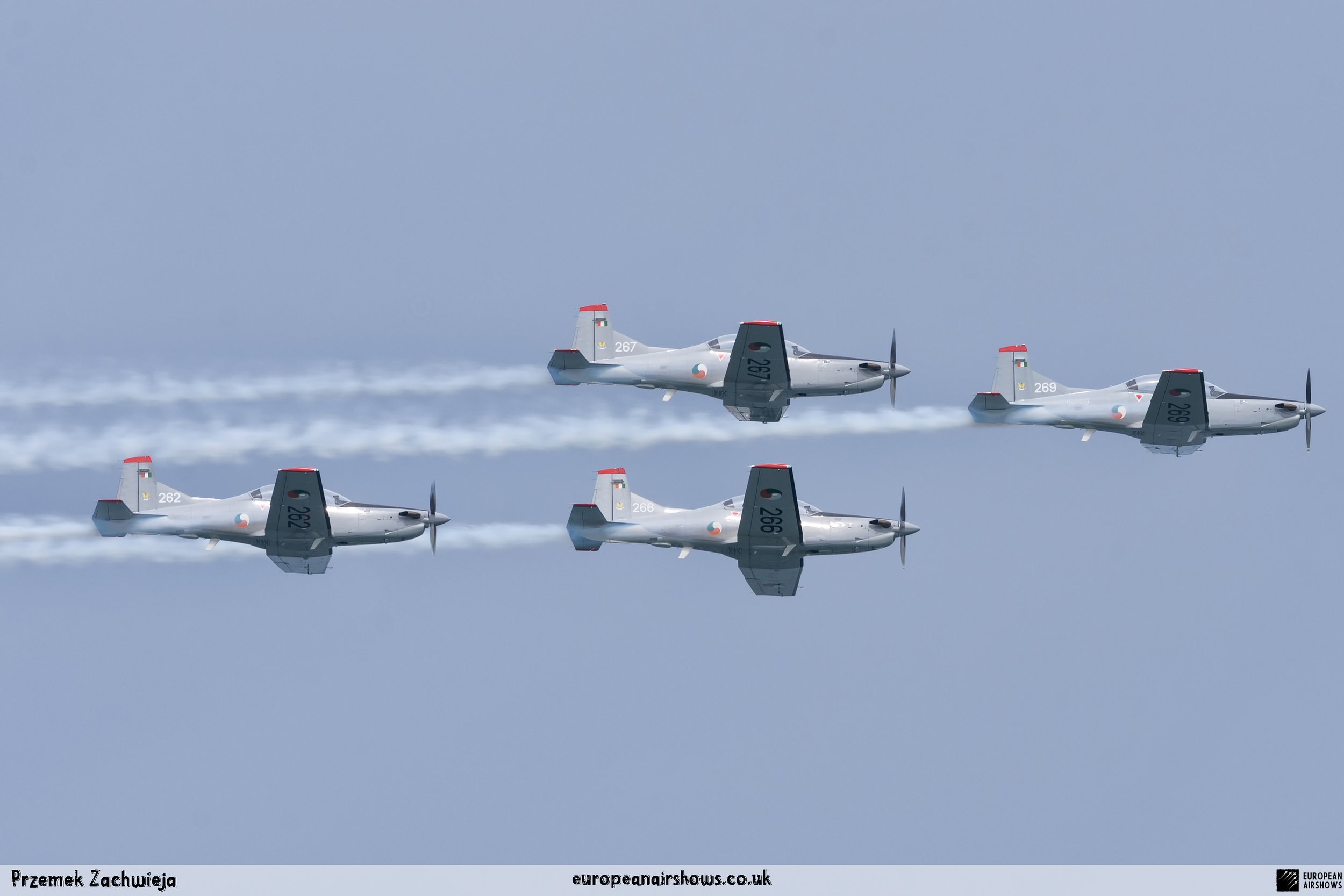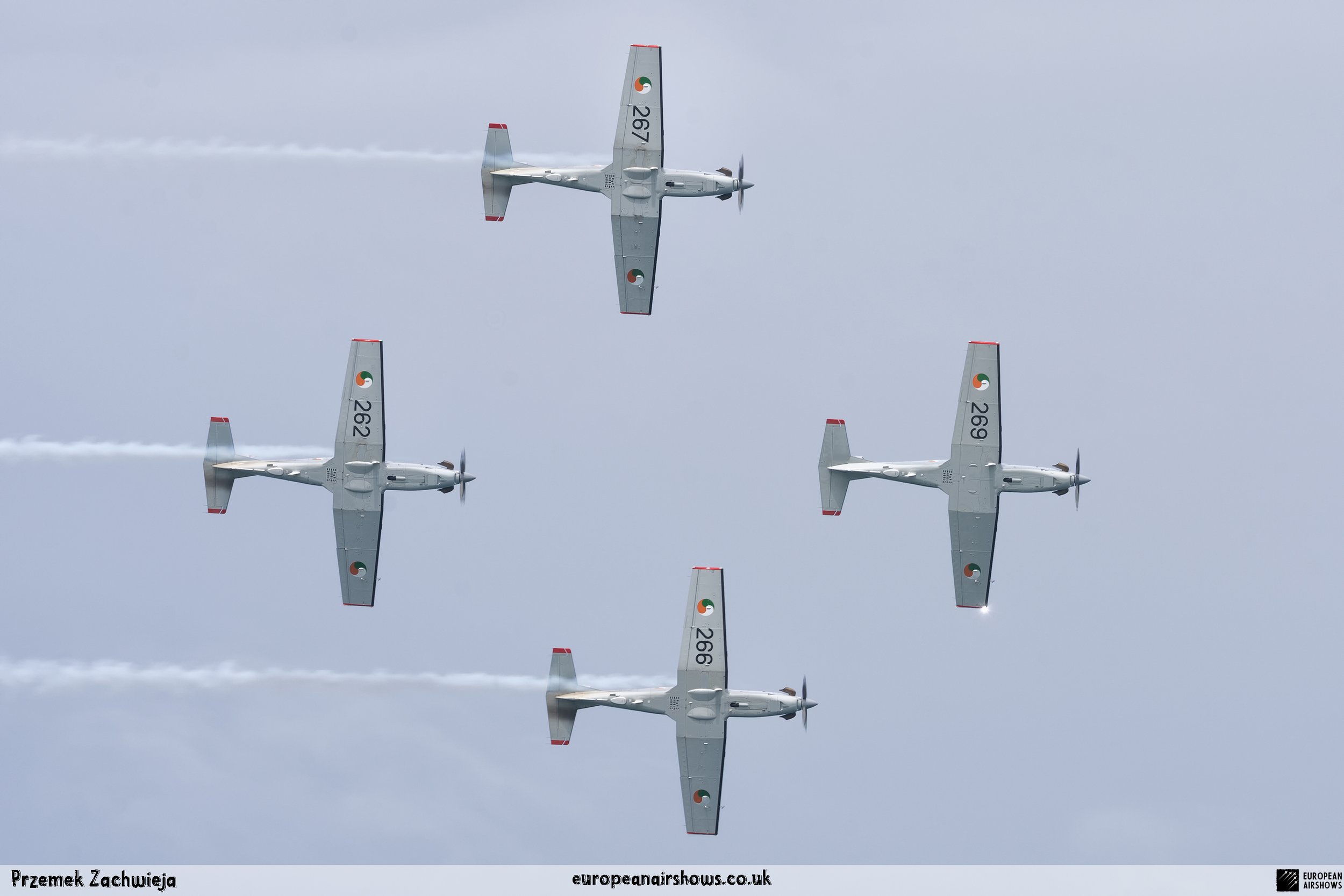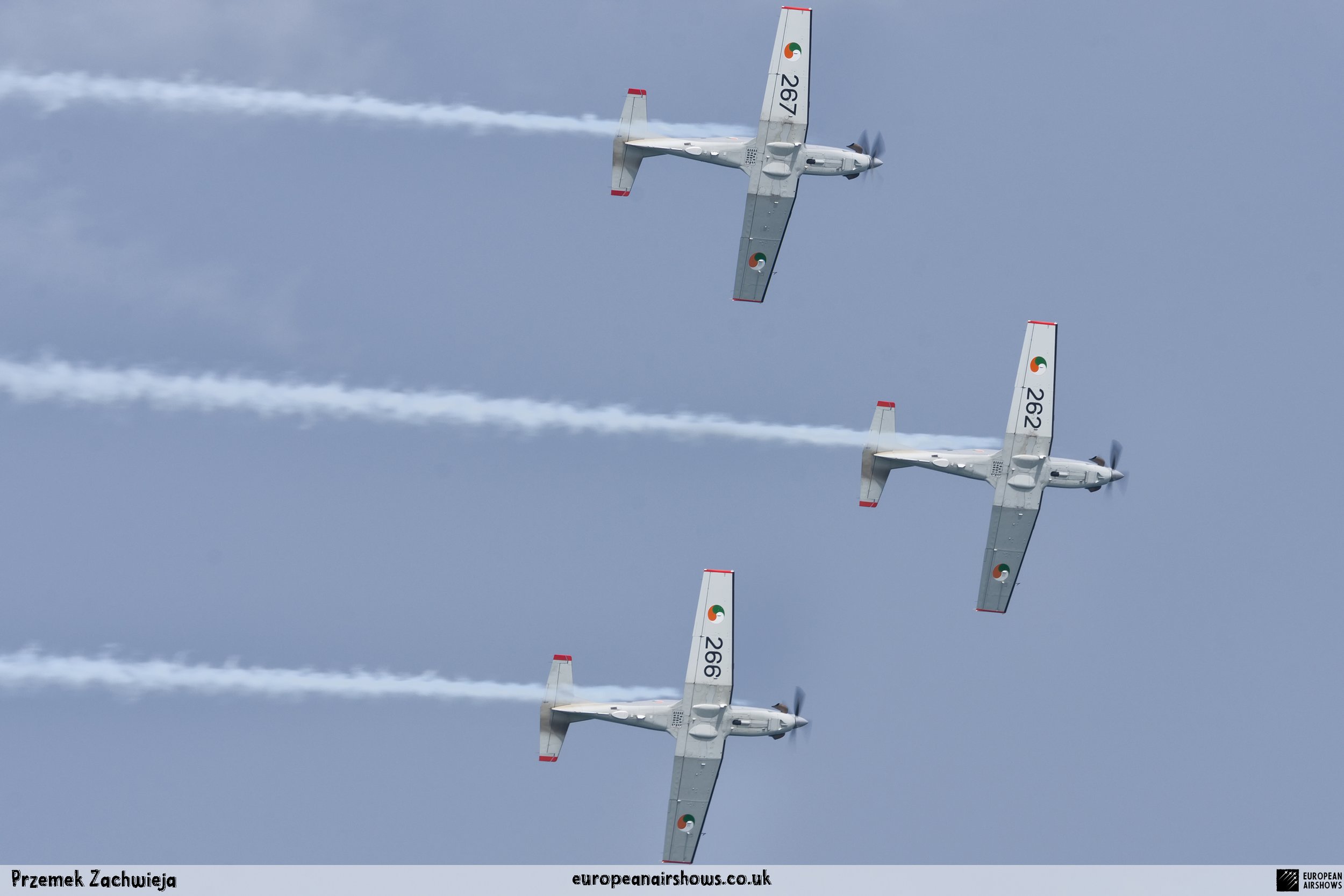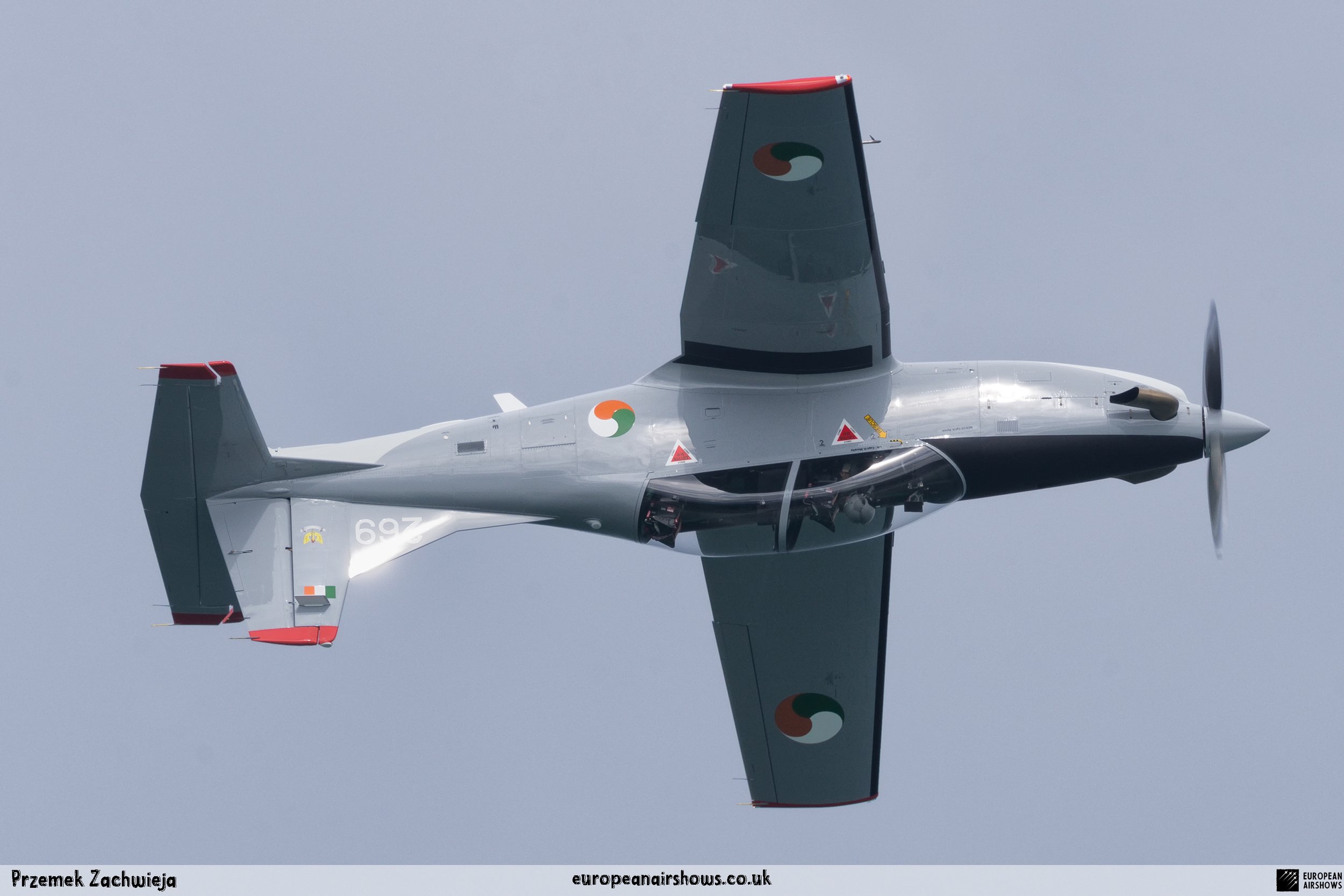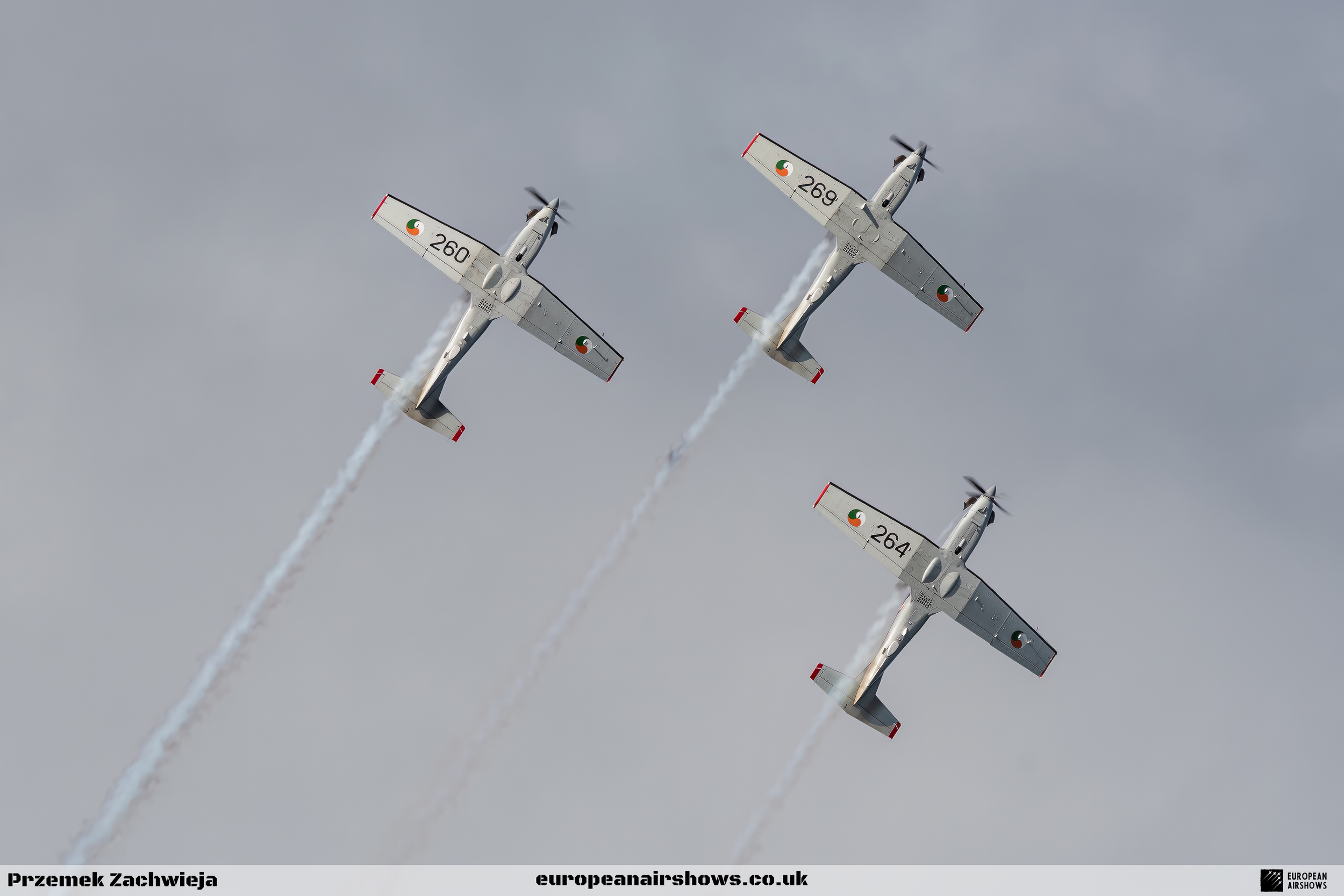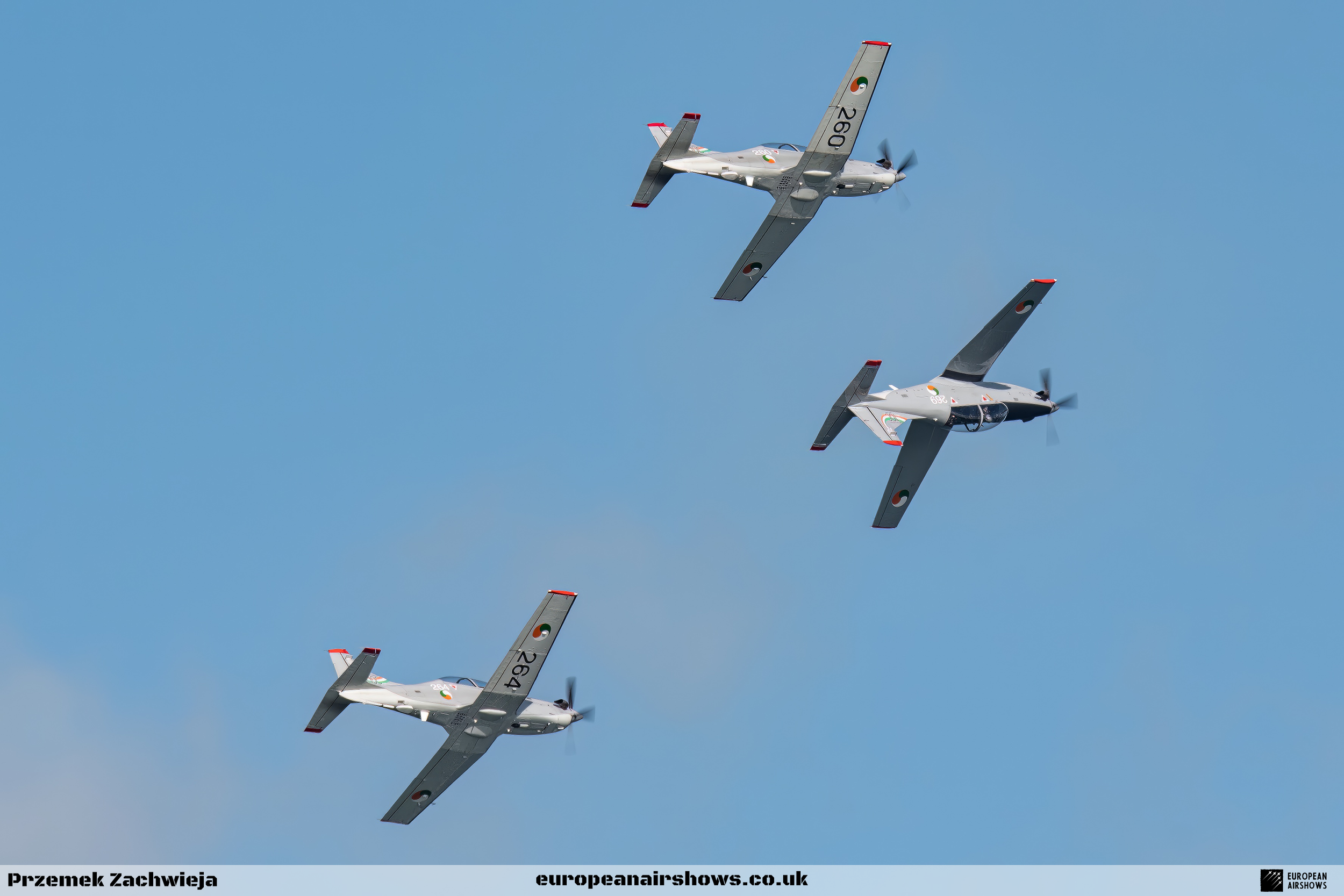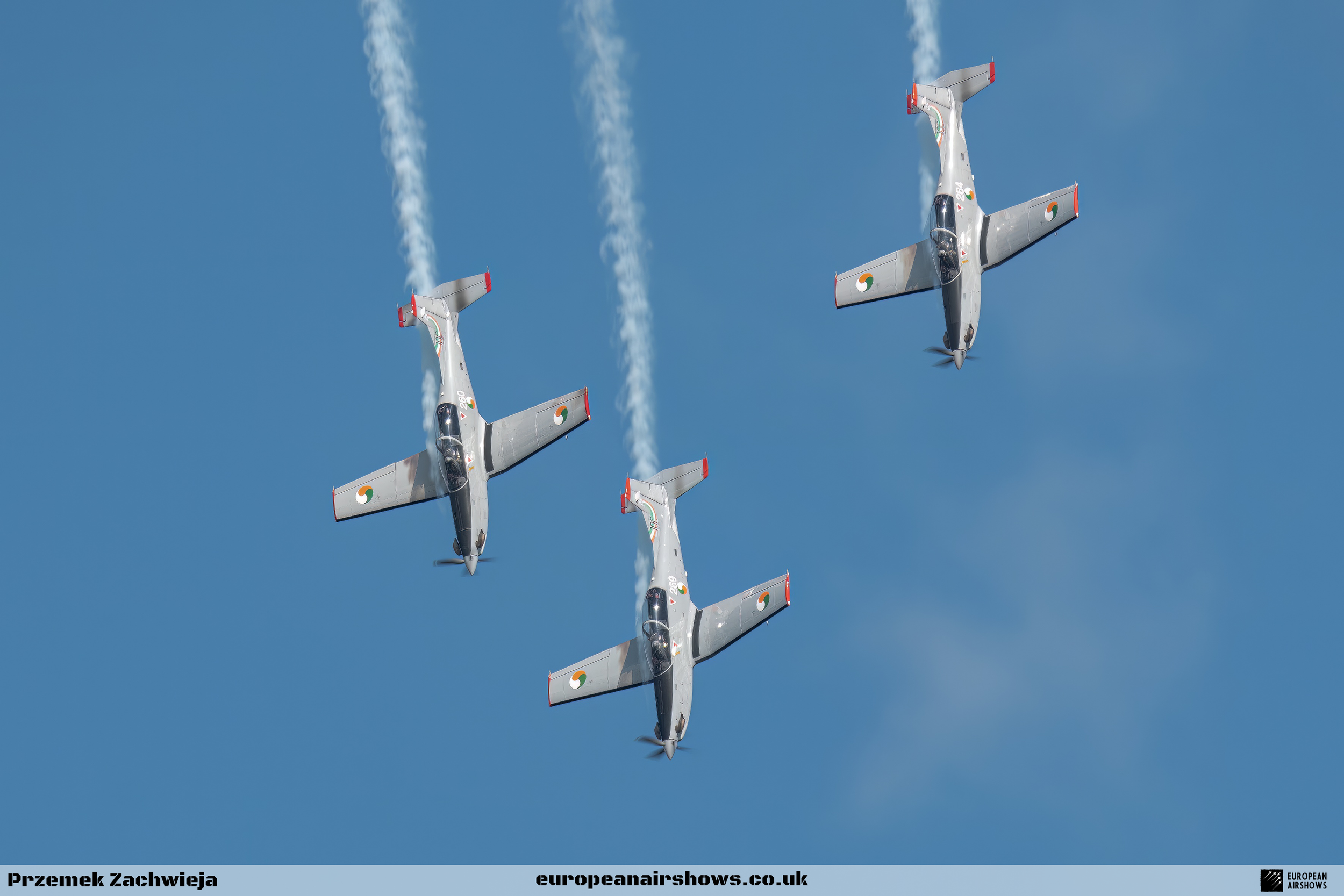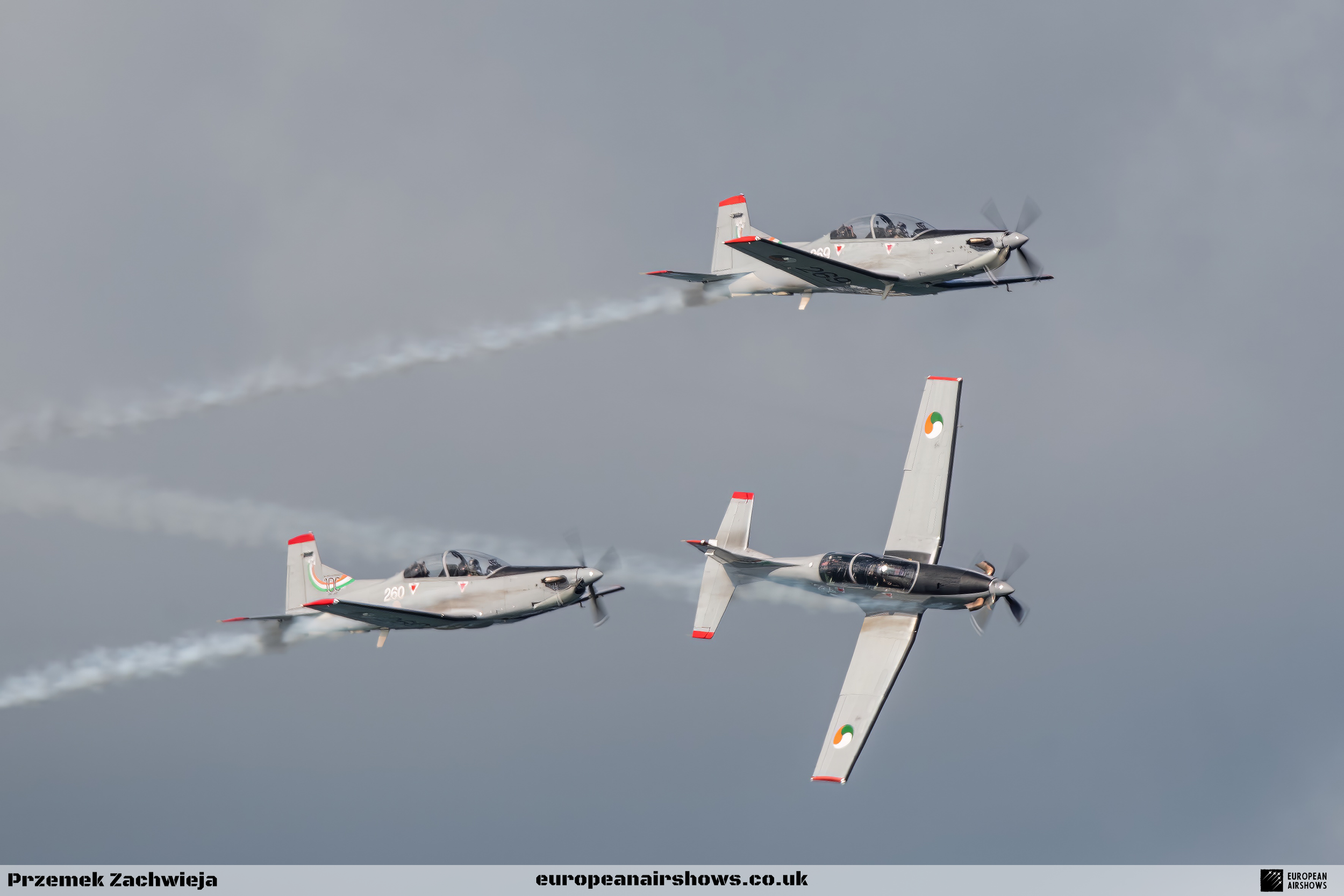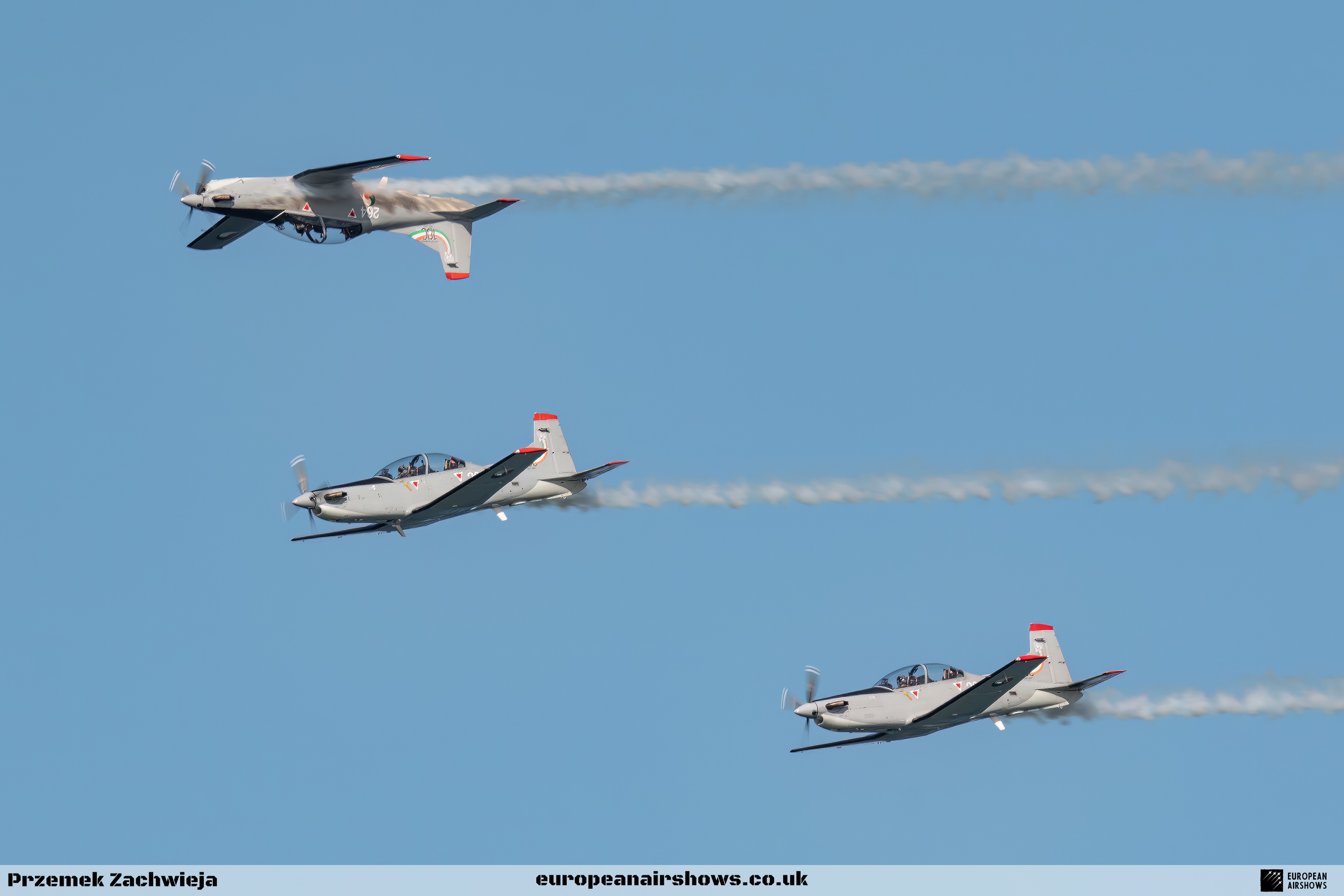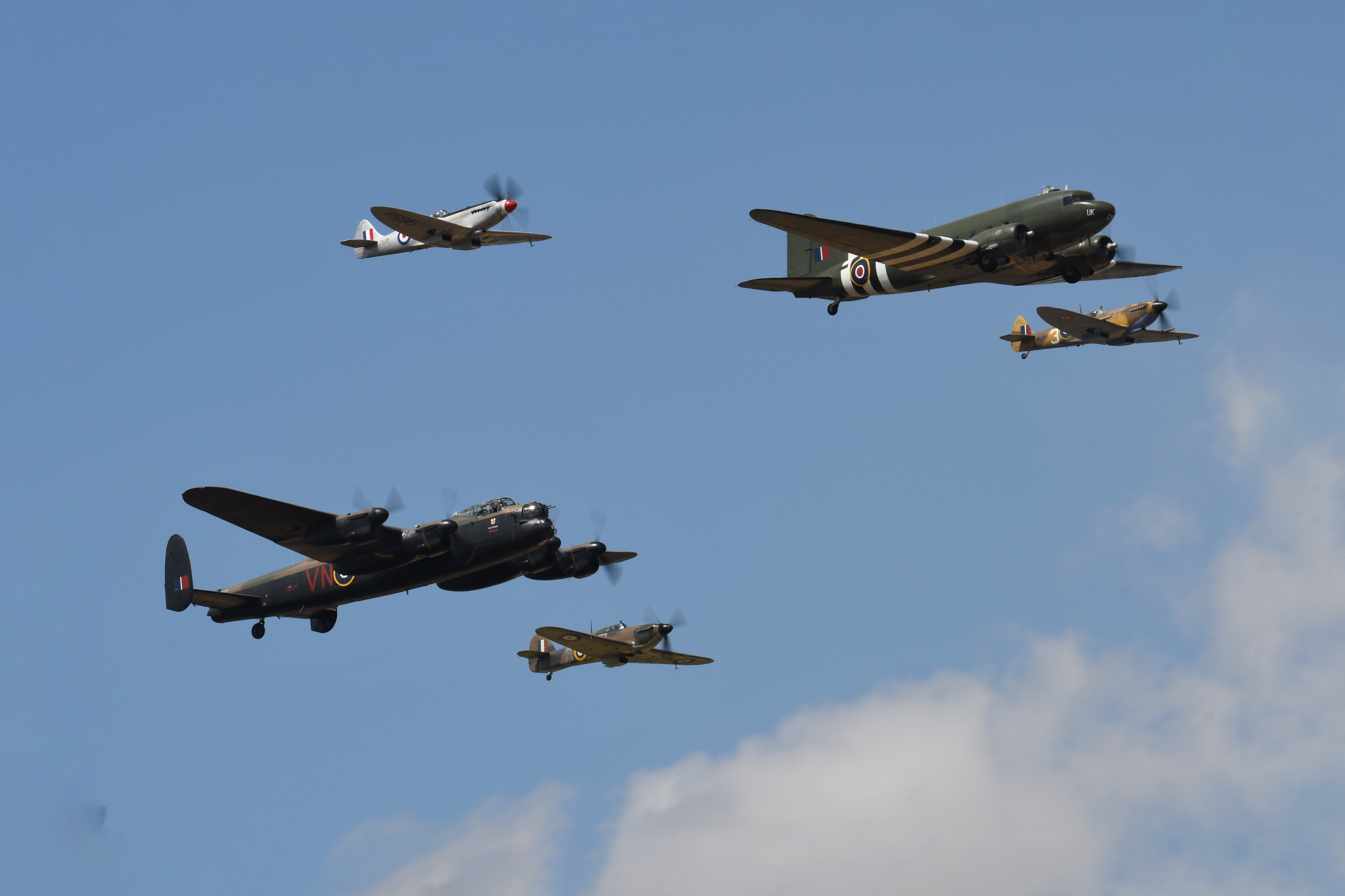Silver Swallows
Country
Ireland
Size
4 Aircraft
Base
Casement Aerodrome
The Silver Swallows, a four-ship aerobatic demonstration team of the Irish Air Corps, is known for its impressive displays of aerial acrobatics. The team flies Pilatus PC-9M turboprop training aircraft painted in a light grey colour with red trim. All the pilots in the team are active flight instructors who have volunteered to display as a team during their free time.
Based at Casement Aerodrome in Dublin, the Silver Swallows attend a few events each year, primarily in the Republic of Ireland. They perform at the annual Bray Air Display and participate in a small number of flypasts for special occasions, such as the Easter Rising centenary parade in 2016.
The team's display routine is a sight to behold, lasting around 10 minutes and consisting of tight formation flypasts, breaks, and solo aerobatics. Their manoeuvres include loops, rolls, spins, and other impressive aerial stunts that demonstrate the pilots' skill and precision.
Although the team rarely performs outside of the Republic of Ireland, they have displayed at the Royal International Air Tattoo and the Newcastle Festival of Flight (Northern Ireland) in 2011, 2012, and 2013. On March 27, 2016, the team, together with two additional PC-9Ms, performed a flypast over Dublin as part of the Easter Rising centenary parade, trailing green-white-orange smoke for the first time.
On July 23 and 24, 2016, at the Bray Air Display, the team performed their first official aerobatic display since the team's aircraft were equipped with smoke systems. This display was particularly impressive, with the aircraft leaving trails of white smoke as they soared through the sky, leaving the audience in awe.
The Silver Swallows are a true testament to the skill and dedication of the Irish Air Corps, and their performances are a testament to the excellence of the team's pilots.
| Back to Top |
Pilatus PC-9M
The Pilatus PC-9 is a single-engine, low-wing tandem-seat turboprop training aircraft manufactured by Pilatus Aircraft of Switzerland. Designed as a more powerful evolution of the Pilatus PC-7, the PC-9's first flight was made in May 1984 after which certification was achieved in September 1985. After this, the first production orders for the type were received from the Royal Saudi Air Force, with deliveries commencing in 1985. Since then, more than 250 airframes have been produced across five different variants and the type is employed by a number of military and civilian operators around the world, including the Swiss Air Force, the Croatian Air Force, and the Royal Thai Air Force.
The PC-9 is a more powerful evolution of the PC-7. It retains the overall layout of its predecessor, but it has very little structural commonality with it. Amongst other improvements, the PC-9 features a larger cockpit with stepped ejection seats and also has a ventral airbrake.
The PC-9 program officially started in 1982. Although some aerodynamic elements were tested on a PC-7 during 1982 and 1983, the first flight of the first PC-9 prototype took place on 7 May 1984. A second prototype flew on the 20th of July the same year; this prototype had all the standard electronic flight instrumentation and environmental control systems installed and was thus almost fully representative of the production version. The certification was achieved in September 1985. By this time, the PC-9 had lost the Royal Air Force trainer competition to the Short Tucano. However, the marketing links that Pilatus built up with British Aerospace during the competition led to their first order from Saudi Arabia. As of 2004, more than 250 aircraft of this type have been built.
The Air Corps currently operates eight Pilatus PC-9M aircraft. These aircraft first entered service in 2004 and operate as the main pilot training aircraft for the Air Corps. The PC-9M is equipped with a comprehensive, fully tandem-capable VFR/IFR avionics package for navigation, communication and identification, using state of the art equipment. The PC-9M features modern avionics including a Head-Up Display (HUD) and Electronic Flight Instrumentation System (EFIS) where primary instruments are displayed. The PC-9M is fitted with a Martin-Baker CG-A Ejection Seat which provides a safe escape for the pilot from sea level to its operational ceiling at any airspeed greater than 65 knots.
| Back to Top |
